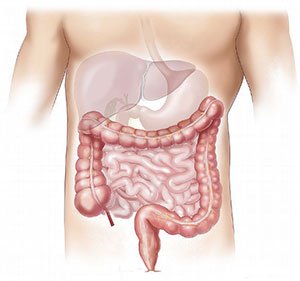Sleep is one of the great mysteries of human life. We spend nearly a third of our lives asleep, yet for centuries, sleep and dreams were shrouded in myth, folklore, and speculation. Ancient cultures believed dreams were messages from the gods, glimpses into the future, or journeys of the soul beyond the body. Today, modern science has peeled back the curtain, revealing that sleep and dreams are not supernatural, but deeply biological, essential to our survival, health, and creativity.
The science of sleep—somnology—is a fascinating field that explores how and why we sleep, what happens inside the brain at night, and what our dreams mean. While we have made great strides, sleep and dreaming still hold many secrets that continue to baffle neuroscientists and psychologists alike.
In this article, we will explore 20 amazing facts about dreams and the science of sleep. Some will surprise you, others may change how you think about your nights, and together they will paint a vivid picture of this mysterious part of human life.
1. You Spend About One-Third of Your Life Asleep
On average, humans spend about 25 to 30 years of their lives asleep. That’s nearly one-third of our entire existence. Sleep isn’t wasted time, though—it’s essential for repairing the body, consolidating memories, regulating emotions, and keeping our brains functioning properly. Without sleep, our health quickly begins to unravel.
Think of sleep as nature’s reset button, a time when the body performs maintenance we can’t live without. Far from being passive, sleep is one of the most active and dynamic processes in human biology.
2. Dreams Occur During REM Sleep
Most vivid dreams happen during REM sleep (Rapid Eye Movement sleep), a stage characterized by fast brain activity that looks remarkably similar to when we’re awake. During REM, the eyes dart rapidly under closed eyelids, breathing becomes irregular, and brain activity surges.
This stage of sleep typically begins about 90 minutes after falling asleep and recurs several times throughout the night. Each REM cycle lasts longer than the last, with the final one potentially lasting up to an hour. This is why dreams often feel longer and more vivid as the night goes on.
3. Sleep Happens in Cycles
Sleep isn’t a uniform state; it’s made up of distinct cycles. Each cycle lasts about 90 minutes and includes several stages:
- Light sleep (stages N1 and N2)
- Deep sleep (stage N3 or slow-wave sleep)
- REM sleep
We cycle through these stages 4–6 times per night. Deep sleep is when the body repairs tissues, strengthens the immune system, and consolidates physical learning, while REM is more closely linked to emotional processing and memory consolidation.
4. You Dream Every Night, Even If You Don’t Remember
Many people think they rarely dream, but in reality, everyone dreams every night. Most people simply forget their dreams shortly after waking. On average, we experience about 4 to 6 dreams per night, adding up to hundreds of dreams each year.
People who claim they “never dream” are usually just poor dream recallers. If woken during REM sleep, almost everyone can recall vivid dream content.
5. Dreams Are Linked to Memory and Learning
Dreams are not random nonsense; they’re closely tied to how our brains process experiences. One leading theory is that dreaming helps consolidate memories—taking information from short-term storage and moving it into long-term memory.
Studies show that people who are deprived of REM sleep struggle more with learning tasks and memory recall. Dreams may act like the brain’s rehearsal space, where new skills and information are tested, sorted, and integrated.
6. The Brain Is Very Active While You Sleep
Sleep is far from a quiet state. In fact, the brain remains highly active, especially during REM sleep. Electrical activity in the brain during REM resembles wakefulness more than rest, which is why dreams can feel so vivid and immersive.
Neuroscientists believe this activity allows the brain to process emotions, creativity, and problem-solving—explaining why sometimes “sleeping on it” leads to sudden insights the next day.
7. Dreams Can Improve Creativity
Some of the greatest inventions and works of art were inspired by dreams. Paul McCartney dreamed the melody of “Yesterday,” Dmitri Mendeleev reportedly conceived the periodic table in a dream, and Mary Shelley claimed the idea for Frankenstein came from a dreamlike vision.
Scientists believe that during dreaming, the brain makes unusual connections between ideas, which enhances creativity and problem-solving. Dreams let the brain wander freely, exploring possibilities without the constraints of logic.
8. Lucid Dreaming Is Real
Lucid dreaming occurs when you become aware that you are dreaming while still inside the dream. Some people can even control elements of their dream worlds—flying, exploring fantastical landscapes, or confronting fears.
Lucid dreaming usually happens during REM sleep and is more common in people who actively practice dream recall or meditation. Scientists have verified lucid dreaming using brain scans, showing that dreamers can send signals from within their dreams by moving their eyes in predetermined patterns.
9. Sleep Deprivation Is Dangerous
Missing sleep isn’t just uncomfortable; it can be deadly. Chronic sleep deprivation weakens the immune system, increases the risk of heart disease, diabetes, and obesity, and severely impairs judgment and reaction times.
In fact, going without sleep for more than 24 hours can impair performance as much as being legally drunk. Extreme cases of sleep deprivation can even lead to hallucinations and, in rare circumstances, death. Sleep is not optional—it’s a biological necessity.
10. Dreams May Help Regulate Emotions
Why do we often dream about stressful or emotional experiences? One theory suggests that dreams help the brain process and regulate emotions, particularly negative ones.
REM sleep appears to reduce the emotional charge of painful memories, allowing people to cope better the next day. This may explain why nightmares are more common during times of stress or trauma—they could be the brain’s way of working through unresolved emotions.
11. Animals Dream Too
Humans are not the only dreamers. Studies show that animals, including cats, dogs, rats, and even birds, experience REM sleep and may dream. If you’ve ever seen a dog twitch, whimper, or move its paws while sleeping, chances are it’s acting out a dream.
Experiments with rats demonstrated that their brain activity during sleep mirrors activity when navigating mazes, suggesting they replay daily experiences in their dreams—just like humans.
12. Nightmares Serve a Purpose
Nightmares can be distressing, but they might also serve a useful role. Psychologists believe nightmares may function as simulations of threats, helping the brain rehearse responses to danger. This “threat rehearsal theory” suggests nightmares evolved as survival tools, preparing our ancestors for real-world challenges.
However, chronic nightmares, often linked to trauma or disorders like PTSD, may indicate that the emotional processing system has become overwhelmed.
13. Not All Sleep Is Equal
The quality of sleep matters just as much as the quantity. Deep sleep and REM sleep are particularly important for restoring both body and mind. Poor sleep quality, even if the duration is long, can still lead to fatigue, mood disturbances, and impaired performance.
Factors like stress, alcohol, caffeine, and irregular sleep schedules can disrupt the sleep cycle, reducing the benefits of rest.
14. Sleep Paralysis Is a Real Phenomenon
Sleep paralysis occurs when you wake up during REM sleep but remain unable to move because the body’s muscle paralysis hasn’t worn off. People often report feeling awake but trapped in their bodies, sometimes accompanied by frightening hallucinations.
Throughout history, sleep paralysis has been linked to myths of demons, witches, and supernatural beings. Today, scientists understand it as a natural (though unsettling) misalignment of brain and body during sleep transitions.
15. Dreams Are Often Forgotten Instantly
It’s estimated that up to 95% of dreams are forgotten within minutes of waking. This is because the brain’s prefrontal cortex—the part responsible for memory and reasoning—is less active during REM sleep.
People who want to remember dreams often keep a “dream journal” by their bed and write down whatever they recall immediately upon waking, before the memories vanish.
16. People Used to Sleep in Two Shifts
Before the invention of artificial lighting, humans often practiced “segmented sleep.” Historical records suggest people commonly slept in two shifts—going to bed shortly after dark, waking for a few hours in the middle of the night, and then returning to sleep until dawn.
During the wakeful period, people would read, pray, converse, or even visit neighbors. This natural rhythm suggests that our modern pattern of consolidated sleep may not be the only way humans are built to rest.
17. Your Brain Cleans Itself During Sleep
One of the most fascinating recent discoveries is that sleep helps the brain perform a kind of “housekeeping.” During deep sleep, the glymphatic system becomes more active, flushing out toxins and waste products that build up during the day.
This cleansing process may protect against neurodegenerative diseases like Alzheimer’s, which are associated with the accumulation of toxic proteins in the brain. Sleep, quite literally, is when the brain takes out the trash.
18. Sleep Varies Across Cultures
Sleep habits are not universal. In some cultures, afternoon naps (siestas) are common, while in others, people sleep in shorter bursts throughout the day and night. Hunter-gatherer societies often sleep in patterns shaped by environmental conditions, not rigid schedules.
Modern life, with artificial lighting and screens, has significantly altered human sleep, often leading to shorter and less restful nights compared to our ancestors.
19. Dreams May Be Universal, but Their Content Is Personal
Certain dream themes appear across all cultures—flying, falling, being chased, or losing teeth. These may represent universal fears and experiences. But the details of dreams often reflect personal life, culture, and environment.
For instance, people in colder regions may dream more about snow, while those in warmer climates may dream more about the sun or drought. Dreams are both universal and uniquely personal, blending shared human experiences with individual memory.
20. We Still Don’t Fully Know Why We Dream
Despite all the research, the ultimate purpose of dreams remains one of science’s greatest mysteries. Are they random neural activity, or do they serve a deeper purpose in memory, problem-solving, and emotional health?
Some theories say dreams are meaningless byproducts of brain activity. Others argue they are critical to creativity, survival, and psychological balance. The truth may lie somewhere in between. What we do know is that dreams are a fundamental part of the human experience—fascinating, strange, sometimes terrifying, and endlessly mysterious.
Conclusion
Sleep and dreams are far more than nightly rituals—they are windows into the deepest workings of the human brain and body. From repairing tissues to consolidating memories, from sparking creativity to flushing out toxins, sleep is essential to our survival. Dreams, meanwhile, remain one of the most intriguing frontiers of neuroscience, blending biology, psychology, and mystery.
Every night, as we close our eyes, we enter a world both familiar and strange. A world where time bends, logic collapses, and imagination reigns. Science has explained much, but it has also revealed just how much we don’t know. Sleep and dreams remind us that even in our most ordinary routines, extraordinary mysteries are unfolding, waiting to be explored.






